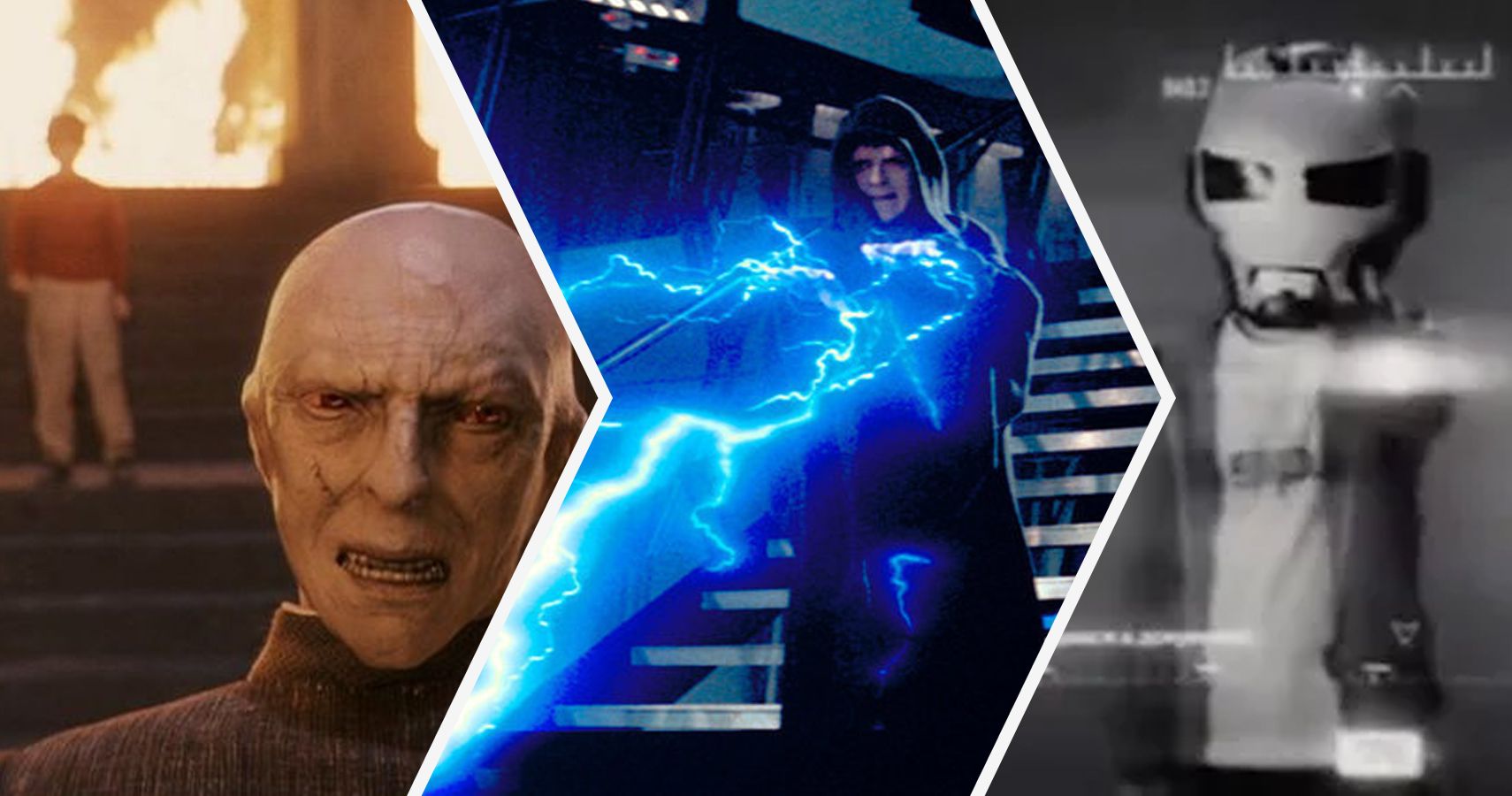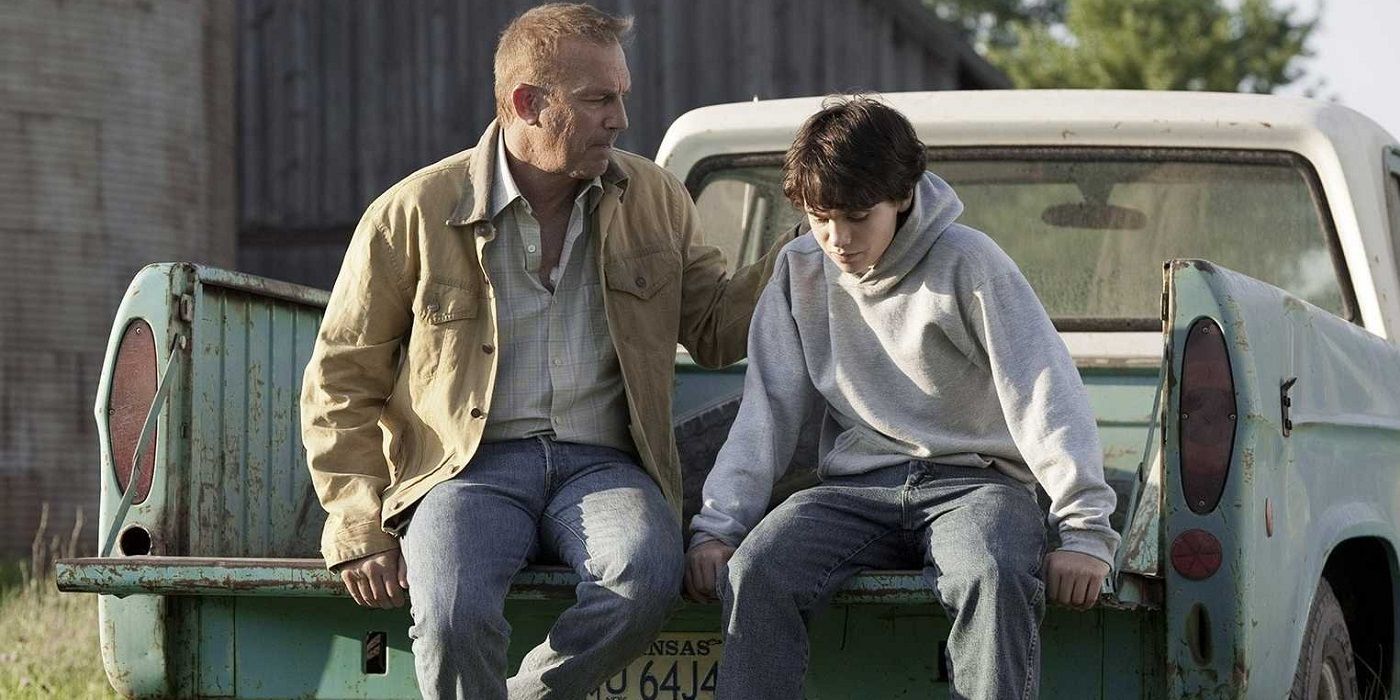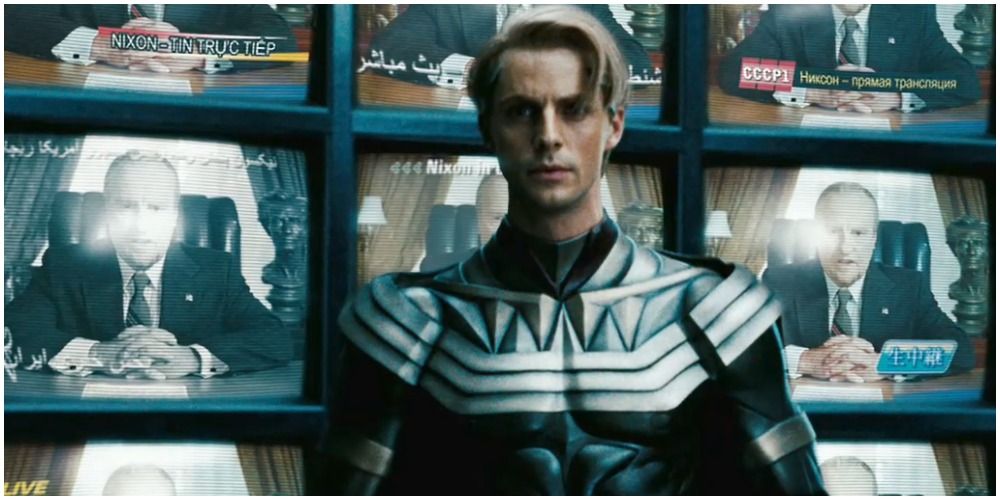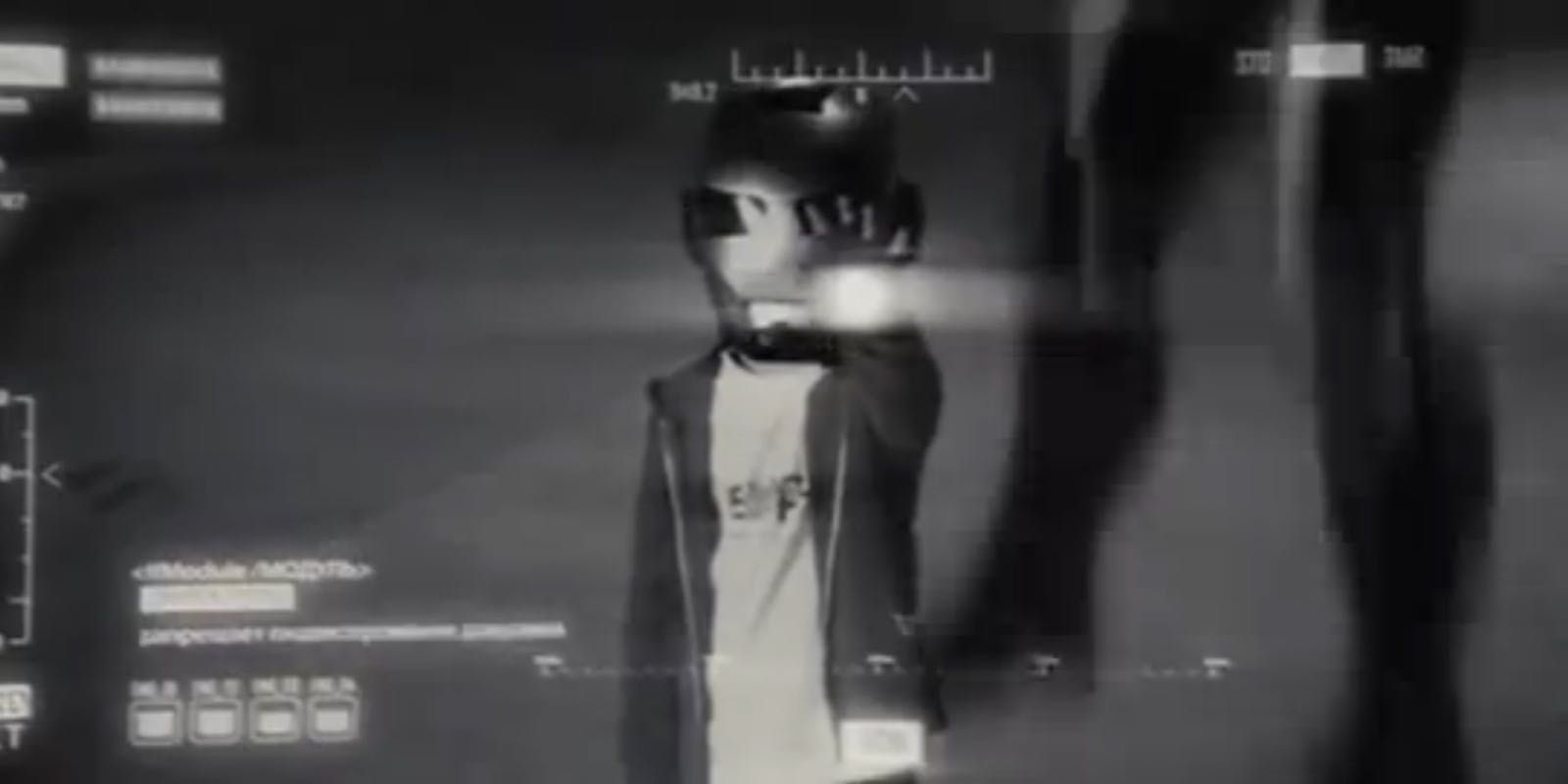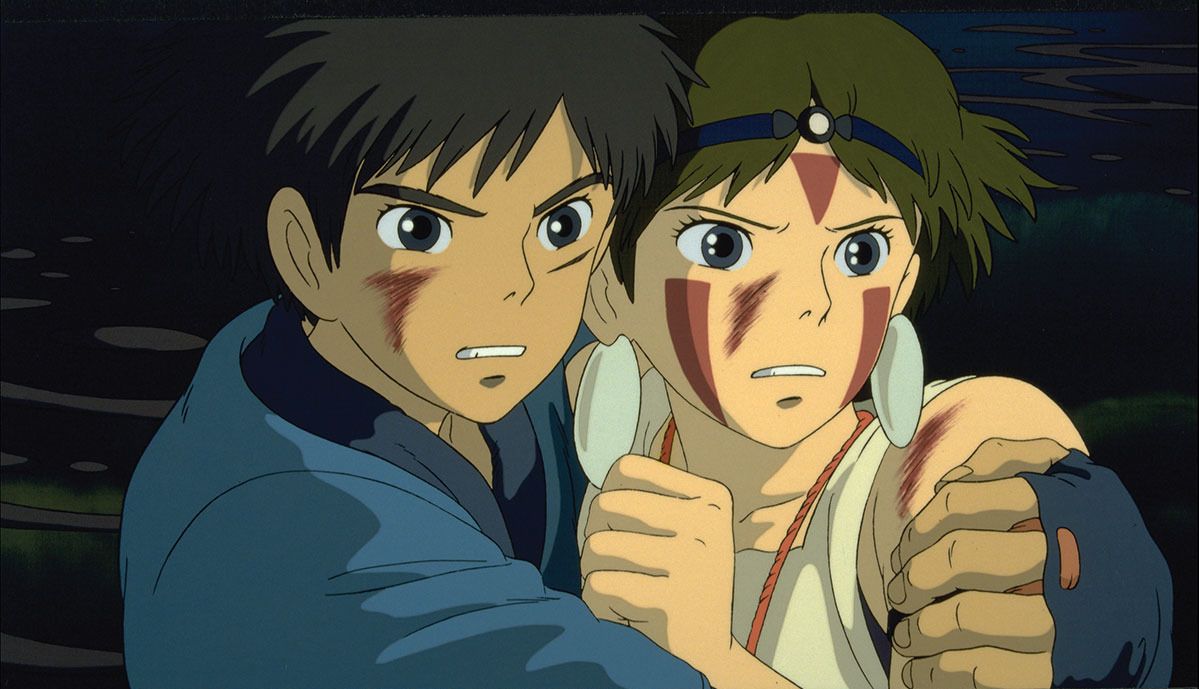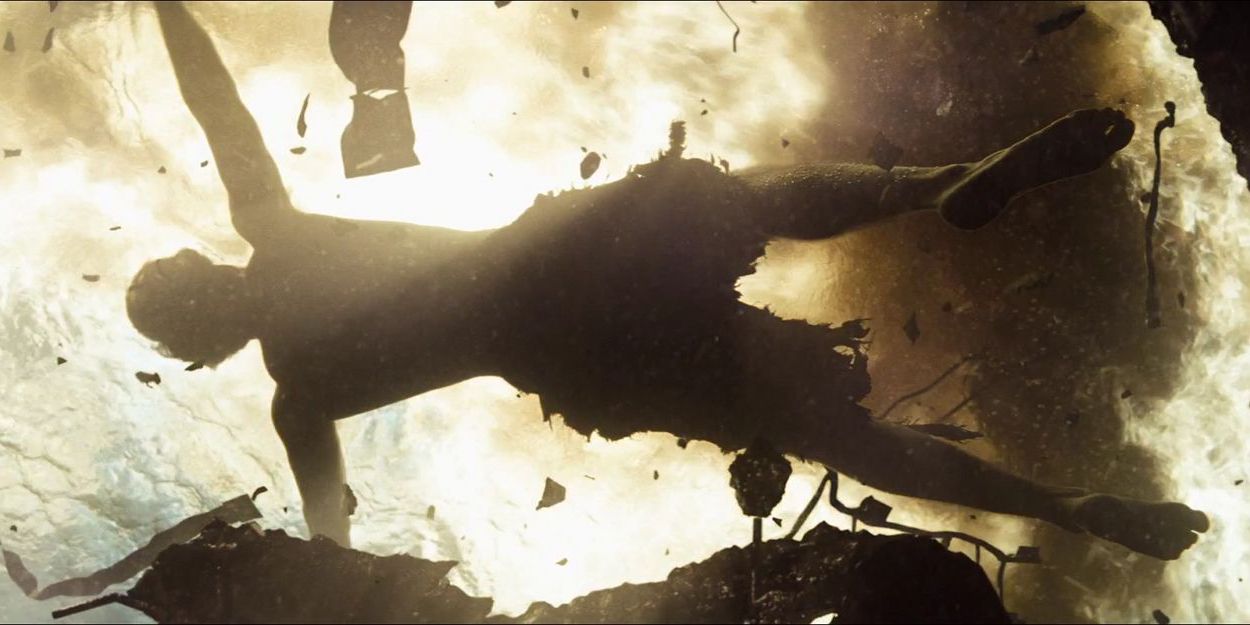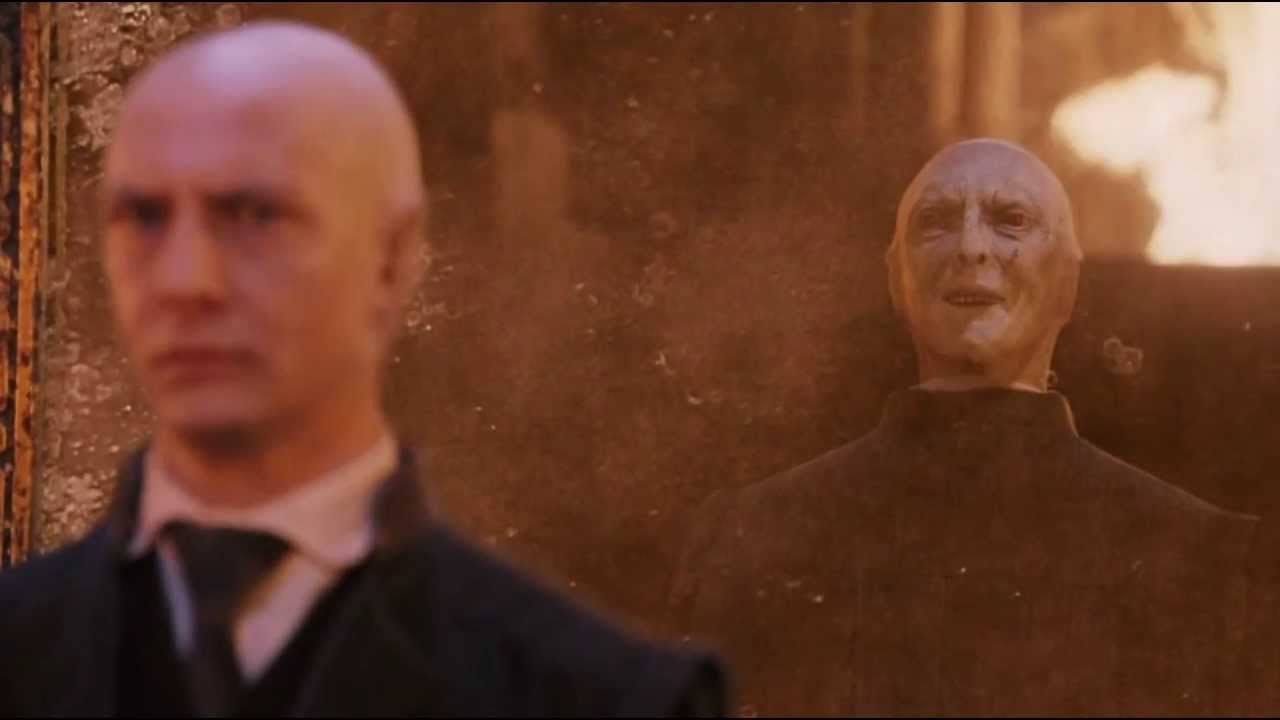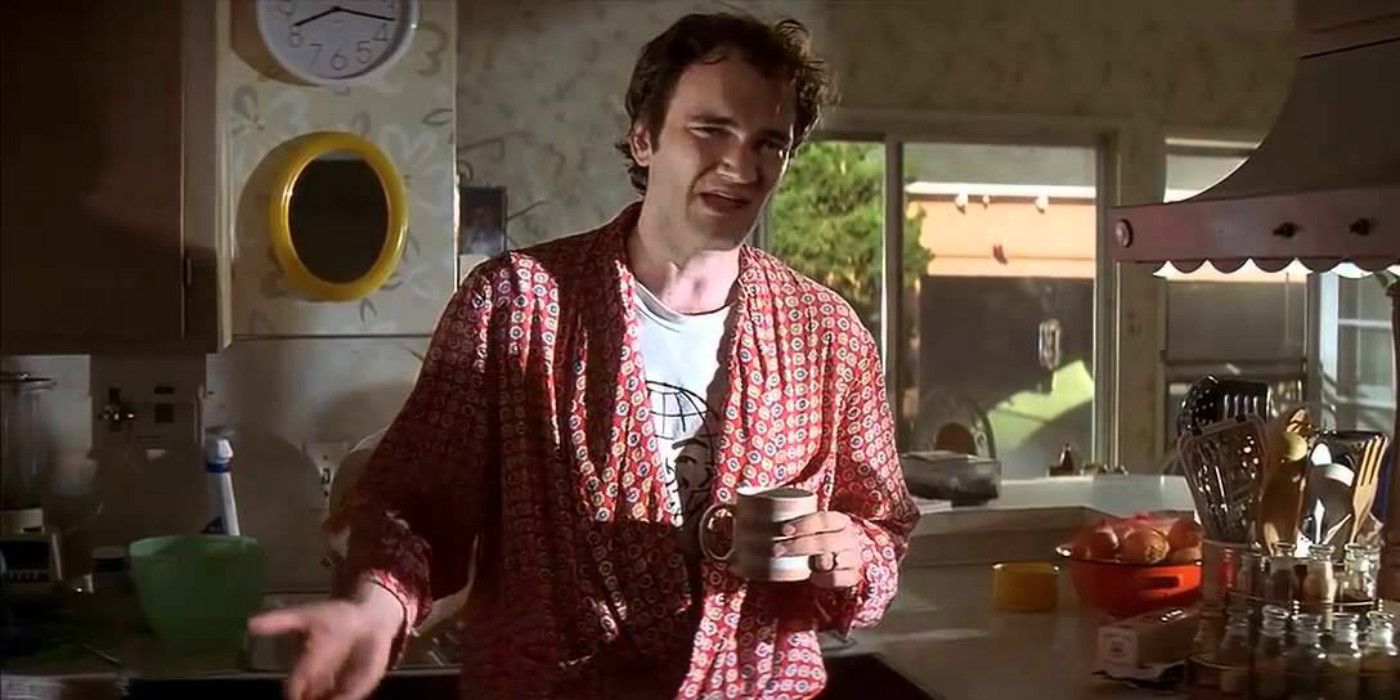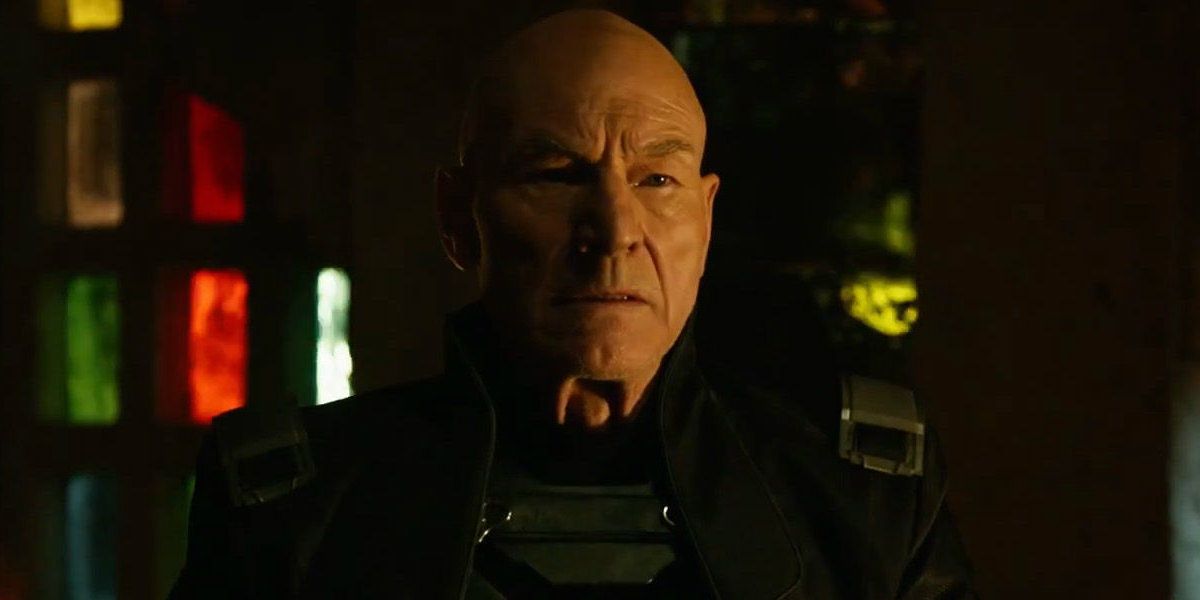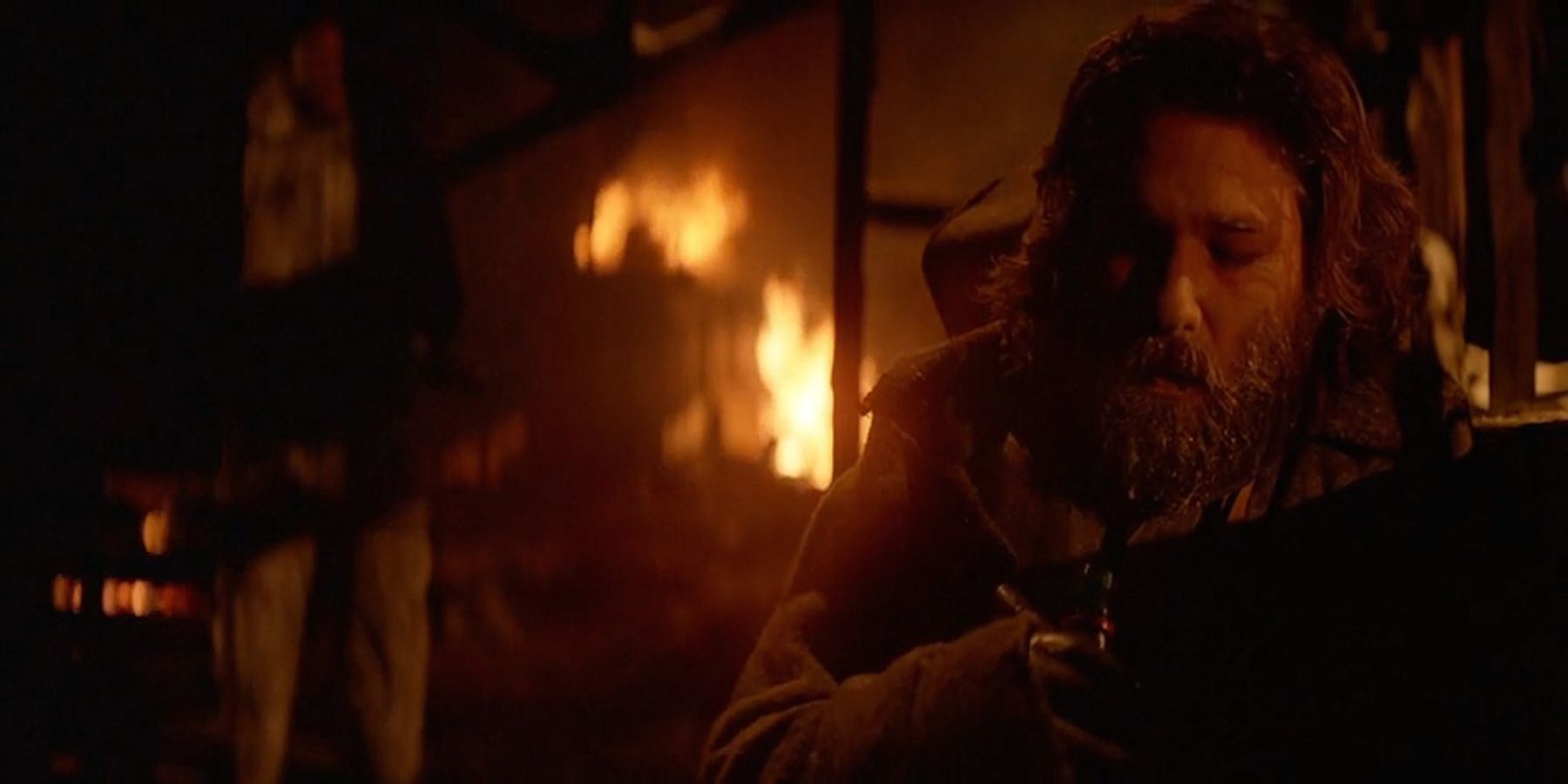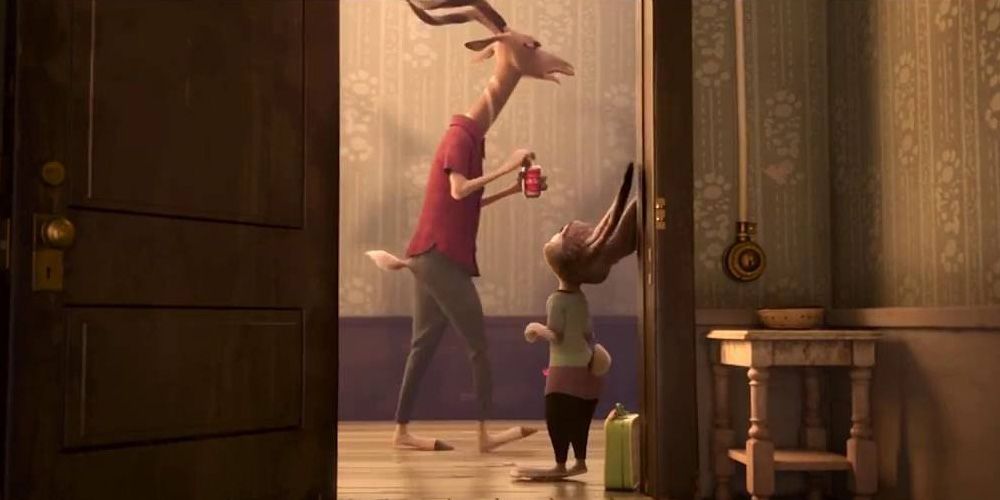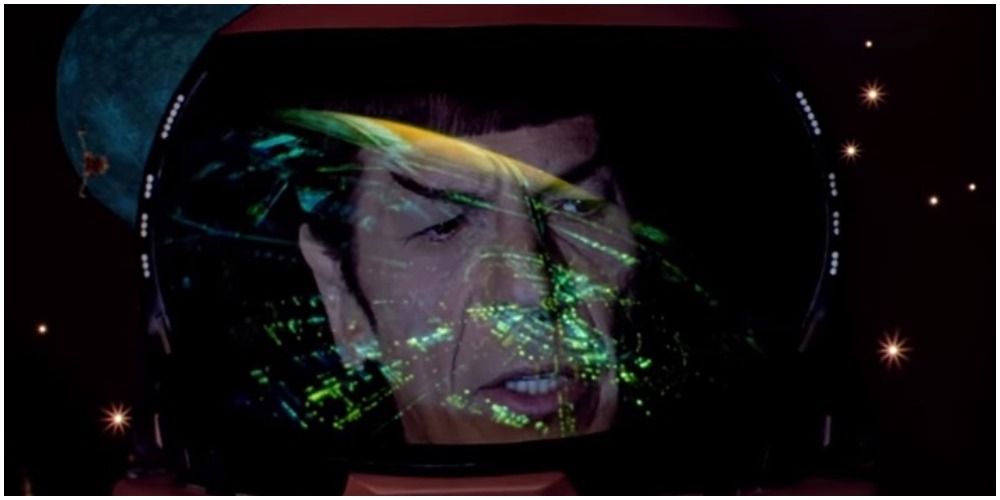We all have our own different ideas and interpretations concerning our favorite movies. The Internet has given us a giant playground, which we can use to share our craziest thoughts about the movies that we love. This is why the discussion about fan theories has become so popular over the years.
There are many different kinds of fan theories, with the most common being that the main character is either deceased or dreaming the events of the story.
This is usually followed by "X character is secretly a Time Lord from Doctor Who" or is hiding the fact that they have a different gender than what we see on the screen.
The discussion of fan theories can be a lot of fun, even when you consider that your idea is probably not what the creator had in mind. Or is it...
There have been times when creators of movies have gone out of their way to let the fans know that their wacky idea was true all along.
This could either be a case of incredible insight on behalf of the fans or just the infinite monkeys with infinite typewriters thing, but it still feels pretty good either way to know that the creator has endorsed your madness.
We are here today to look at the insane fan theories about popular movies that have been confirmed by their creator or in outside material related to the series.
From the secret lineage of one of the main characters in Watchmen to the secret behind Spock's vision in Star Trek: The Motion Picture, here are the 15 Crazy Movie Fan Theories That Were Proven Right!
The Memory Of Superman's Father
There are some fans who will discount deleted scenes as being canon, as they can't be that important if they were cut from the story.
Whether a deleted scene counts as being canon should be considered on a case by case basis, as there are times when they can explain mistakes (like the octopus scene in The Goonies, which is referred to by the characters but never actually seen in the theatrical cut of the film) or just to fill time (like the bladder-bursting extended editions of The Lord of the Rings trilogy).
Justice League has a brief deleted scene that turned out to be far more important than anyone realized. It shows Superman turning down a black version of his costume and choosing to retain his classic blue & red suit.
When this deleted scene was released, it caused speculation over the true meaning of Superman making a choice concerning his costume.
The main theory was that it related to a scene in Man of Steel, where his father told him that one day he would make a choice over whether he would stand proudly in front of the human race or not.
A fan contacted Zack Snyder on Vero and asked him outright about the theory. Snyder not only responded but confirmed that this was his original intention for the scene all along.
The Life & Demise Of Boba Fett
Boba Fett managed to become one of the most popular Star Wars characters without actually doing anything except for standing around and looking cool.
It seems that George Lucas didn't get the memo that Boba Fett was a merchandise selling machine until after production wrapped up on Return of the Jedi. If he had, then he probably would have given him a cooler last scene or just kept him alive altogether.
Star Wars fans have long speculated that Boba Fett actually survived the events of Return of Jedi by using one of the gadgets in his armor to blast his way free from the Sarlacc.
The idea of Boba Fett escaping from the Sarlacc is something that was embraced by the old Expanded Universe, as he went on to star in numerous different comic books and novels which took place after Return of the Jedi.
The Expanded Universe is no longer canon and a lot of fans discounted it anyway. It's really up to George Lucas whether Boba Fett survived or not.
A Lucasfilm staff member named Jonathan Rinzler has confirmed that George Lucas had discussed Boba Fett's survival during private meetings. George Lucas has also mentioned that Boba Fett should be referred to as "The Survivor" at fan events.
Ozymandias & The Nazi Connection
In the eleventh issue of Watchmen, we learn the backstory of Adrian Veidt, who took on the mantle of Ozymandias.
Veidt reveals that his parents arrived in America in 1939, which was the year he was born. His parents passed away when he was seventeen and they left him a large inheritance, which he gave away as part of his journey to prove that he could build his empire from nothing.
Fans of the Watchmen movie noticed a subtle difference in the portrayal of Ozymandias to how he speaks in the comics. When Ozymandias is confronted by Nite Owl and Rorschach at the end of the movie, he starts to talk with a slight German accent.
This change in how Ozymandias spoke caused fans to suspect that a connection to the Nazis was being added by the filmmakers. A change like this actually has some sense to it, considering Ozymandias' appearance and the genocidal nature of his plan.
Matthew Goode has confirmed these theories in an interview, where he talks about how he came to Zack Snyder with an idea about how to approach the character.
According to Goode, they agreed that the movie version of Ozymandias grew up in Germany and that his parent's fortune came from acts they committed while members of the Nazi Party, which is why he abandoned it.
The fact that Ozymandias spoke German in private while affecting an all-American image when in public is also meant to reflect the dual nature of his character and how his persona is meant to mask who he truly is.
Khan Stole Michael Jackson's Disguise
The identity of Khan was originally kept a secret in the promotional material for Star Trek Into Darkness. The fact that the character was played by Benedict Cumberbatch convinced a lot of people that it couldn't be Khan, as Cumberbatch is caucasian and Khan's original actor (Ricardo Montalban) was of Spanish descent, although Khan himself was hinted as coming from India.
Star Trek Into Darkness revealed that Benedict Cumberbatch was indeed playing Khan, which initially prompted accusations of whitewashing.
This also led to speculation that Khan had changed his appearance, as he was forced to join Section 31 and take part in secret missions.
Khan had a reputation that was similar to Adolf Hitler (Captain Picard actually compares the two in an episode of Star Trek: The Next Generation), as he was one of the chief architects of the Eugenics War.
It would make sense that he would need to alter his physical appearance in order to avoid suspicion.
The fifth issue of the Star Trek: Khan comic book series confirmed this theory, as it shows Khan's backstory in the new timeline.
It turns out that Section 31 altered his appearance and his memories before waking him up out of cryogenic sleep. Khan would not discover his true identity until after helping Section 31 design their new ships and weapons.
The Early Peter Parker Cameo
The X-Men comics were Marvel's biggest sellers for a long time. This caused issues when Disney bought Marvel, as they primarily wanted to make movies based on the Marvel properties and the rights were spread out among different companies.
This has led to Disney making stars out of the far less popular Avengers characters and cutting deals with Sony in order to add Spider-Man to the Marvel Cinematic Universe, as he was still a big draw even without the power of Disney behind him.
The fans had been hoping for Spider-Man to appear in the Marvel Cinematic Universe since The Avengers. This was spurred on by the disappointment of The Amazing Spider-Man movies, which seemed to only exist to try and create a Spider-Man Cinematic Universe.
Little did they know that Spider-Man was hiding in the MCU all along.
There is a scene in Iron Man 2 where a Hammer Drone approaches a child wearing an Iron Man mask. Iron Man swoops in and saves the day, before flying off again.
The fans had speculated that this kid may have been Peter Parker, based on nothing more than the fact that the scene took place in Queens and the kid was clearly a fan of technology.
This theory became even more popular when Spider-Man actually became part of the Marvel Cinematic Universe, as the age of the child made sense in relation to the timeline.
Tom Holland confirmed to the Huffington Post that this theory was true, as he liked the idea that Spider-Man had been in the Marvel Cinematic Universe for a long time.
The Mysterious Disease In Princess Mononoke
Leprosy was once a scourge of mankind, with millions of lives being consumed by the disease throughout most of our shared history.
It's now possible to cure almost every form of leprosy, which is why the number of sufferers has dwindled to less than two-hundred-thousand people, where it used to be in the millions.
Those who suffer from leprosy tend to lose their extremities to the disease. This has led to a stigma against leprosy sufferers, as there have been societies that have outcast those with the disease, due to the belief that it reflected some evil within the person.
There is an incurable disease present in the world of Princess Mononoke that many fans have theorized is meant to be leprosy.
Those who suffer from the disease are shown with missing limbs and covering their face, which may be to hide the scarring of the face that is caused by the disease. They are allowed to live in Irontown, as they are not welcome anywhere else.
Hayao Miyazaki has confirmed that the disease shown in Princess Mononoke was indeed meant to be leprosy. The reason he chose to depict it in the movie was due to his own experiences during his youth, as he had visited a sanitarium in western Tokyo that had leprosy patients who all endured terrible suffering.
This was due to the fact that all leprosy sufferers were forced to move to sanitariums in Japan (something that wasn't repealed until 1996) and sterilized against their will.
Palpatine Destroying Darth Plagueis
In Star Wars: Episode III - Revenge of the Sith, there is a scene where Palpatine tells Anakin the legend of Darth Plagueis, who was also known as "The Wise."
Darth Plagueis was able to use the Force to create life, though he clearly couldn't use this amazing ability on himself, as he was slain by his apprentice.
Palpatine told Anakin this story as part of his plot to tempt him with the power of the dark side of the Force. The question that the viewer is left with is whether Palpatine was telling the truth or not?
Was Darth Plageuis actually a real Sith Lord or was he made up in order to give false hope to Anakin? If Darth Plagueis was real, then how does Palpatine know so much about him?
It didn't take long for the fans to speculate that Palpatine was actually the rogue apprentice in the story and had slain Darth Plagueis as part of the "Rule of Two" system that had been established by Darth Bane.
This would explain how Palpatine knew so much about Darth Plagueis and it would fill a hole in his backstory.
The connection between Darth Plagueis and Palpatine was confirmed on the Databank, which was an official Star Wars website that acted as an online encyclopedia for everything related to the franchise.
The information on the Databank is now considered obsolete, but the recent Tarkin novel confirms that the Darth Plagueis/Palpatine connection is still valid in the current continuity of the series.
Man Of Steel Didn't Steal The Ending Of The Core After All
Man of Steel became the first movie in the DC Cinematic Universe as a last minute decision. The movie was already in production when The Avengers changed the face of the movie industry forever, which meant that it would have been tricky to start adding cameos and post-credits sequences when they didn't have any other movies planned yet.
There is a scene in Man of Steel that many fans felt was a very early cameo for a character who had yet to exist within the realm of the DC Cinematic Universe.
In Man of Steel, there is a scene where Superman saves a group of people who are trapped on a burning oil rig.
The rig collapses on top of him and drags him beneath the waves, causing Superman to fall unconscious. Superman is awoken by the sound of whales, who may have been responsible for saving his life.
This scene led to speculation that the whales had actually been sent by Aquaman, who has the ability to communicate with sea creatures.
The idea of Aquaman being in the movie clearly didn't exist when it was being made, but that hasn't stopped some good old-fashioned retconning.
Jason Momoa has confirmed the fan theory that Aquaman was responsible for saving Superman's life in Man of Steel. According to Momoa, this was also confirmed by Zack Snyder, who had intended this moment to be the first time that the two characters had met.
The Eighth Horcrux
It's possible to possess the minds and bodies of other wizards in the world of Harry Potter. You can force someone to do your bidding with the Imperius curse, or use Wingardium Leviosa to force someone to levitate above the ground and be at your mercy.
Voldemort also used Legilimency to briefly possess the mind of Harry Potter in The Order of the Phoenix, though this may only have been possible due to their unique mental connection.
Voldemort had also taken possession of the body of Professor Quirrell throughout the events of Harry Potter and the Philosopher's Stone. This was a far more invasive procedure, as Voldemort's head was attached to the back of Quirrell's own and needed to be covered.
The unique parasitic possession of Professor Quirrell led fans to suspect that he may have been turned into a Horcrux in order to facilitate the creation of a temporary body while Voldemort searched for a means to restore his original form.
Professor Quirrell's status as a Horcrux was finally confirmed on Pottermore, where J.K. Rowling claimed that Voldemort's presence was draining the life out of Quirrell.
This is likely what caused him to seek out unicorn's blood, so that the body could stay alive until Voldemort's plan to find the Philosopher's Stone could be completed.
The Two Tarantino Timelines
Quentin Tarantino has long been including connections between all of his works, which may have something to do with the fact that he is a big comic book fan.
This dates back to Reservoir Dogs and Pulp Fiction, with Vic Vega and Vincent Vega being brothers. This was going to lead to a movie starring the two characters, called The Vega Brothers, but it has yet to officially enter production.
As Quentin Tarantino's filmography grew, he started to add movies that used more fantastic elements, such as the martial arts powers of Kill Bill and the vampires of From Dusk till Dawn.
The inclusion of supernatural elements would seem to ruin the idea of a single Tarantino Cinematic Universe, as the mystical characters don't mix with the gritty gangster stuff.
Like The Legend of Zelda fans before them, the Tarantino fans started to theorize about the idea of there being multiple realities, with the more realistic characters belonging in one shared world and the magical stuff belonging in another.
Quentin Tarantino would finally give his thoughts on the matter when asked directly about how his movies are connected while a guest on The Project.
According to Tarantino, the supernatural movies belong in a fictional universe of their own, which is what the characters from his movies like Reservoir Dogs and Jackie Brown go to see when they go to the cinema.
The Dangerous Cars
The quickest way to ruin a Pixar movie is to over-think it; are there toys in the world of Toy Story who are abandoned in distant places and forced to live alone forever? Do they judge their human owners for what they do in private?
This is to say nothing of the movies where animals have sentience (like Finding Nemo and A Bug's Life), as they have to endure the horrors of the animal kingdom, as well as the cruelty of humanity.
These kinds of theories are usually left to the domain of creepypasta and fanfiction. You wouldn't think that any kind of dark theory about a Pixar movie would ever be given credence by a member of the production crew.
The creative director of Cars was crazy enough to offer his own opinion on one of the darker theories concerning the movie, which confirmed the fact that the vehicles had wiped out humanity.
There is evidence within Cars to suggest that the cities and vehicles were built by humans.
Jay Ward supported the idea that self-driving cars had gained sentience and wiped out humanity, which means that Cars is essentially a Terminator movie where the machines won.
The Spare Brother Of Charles Xavier
X-Men: The Last Stand destroyed several prominent characters, such as Cyclops and Jean Grey. These demises were later undone by the changing of the timeline that occurred in Days of Future Past, which managed to prevent the future where Brett Ratner was given the chance to direct an X-Men movie.
Charles Xavier also passed away during the events of X-Men: The Last Stand, as Jean Grey disintegrates him while under the thrall of the Phoenix side of her personality.
You would think that being blown into dust would be definitive, but Charles Xavier managed to survive thanks to something that was introduced earlier in the movie.
Charles shows footage of a man in a hospital bed whose brain cannot function and asks whether it would be ethical to put someone else's mind into that person's body. Charles would later manage to survive by using his psychic powers to possess this man's body.
When Charles Xavier shows up at the end of The Wolverine, he looks like Patrick Stewart again. This is also true of his appearance in Days of Future Past.
One idea theorized by the fans was that Xavier may have had a twin brother. He has a twin in the comics (though she is a sister) and it would explain why he had knowledge of the person and why they were at the Muir Island facility.
This theory was confirmed in the DVD commentary of X-Men: The Last Stand, with the twin's first initial being revealed to be P.
The Survivor & The Thing
The story of The Thing involves a parasitic alien lifeform taking over the bodies of a crew of researchers who are stationed at a base in Antartica. The movie concludes with the survivors destroying the base in order to prevent the alien from infecting any rescue crew that might come for them.
The final scene of The Thing shows MacReady and Childs sitting out in the storm while waiting to pass away. The two of them had been separated for a while, so it was possible that either of them could be infected. The movie ends before we learn the resolution of the story.
There was a sequel to The Thing in the form of a video game, which depicts the rescue team dealing with the alien lifeform, but the story isn't considered to be canon.
The Thing had some unique ideas for its time, but they were let down by poor execution.
The Thing video game claimed that neither Childs nor MacReady were infected. Childs had passed away of hypothermia but MacReady had inexplicably managed to survive and actually saves the player during the end boss battle.
Fans had come up with numerous theories about The Thing's ending and the idea of one of the survivors being infected.
John Carpenter has actually confirmed on Twitter that one of the survivors was infected during the final scene of the movie, but he refused to name who it was.
Disney's Secret Gay Couple
There has been a vocal demand for more LGBTQ characters in Disney movies. This extends to both their animated features and the Marvel Cinematic Universe, the latter of which has been notably lacking in terms of representation.
This isn't to say that Disney has totally lacked in LGBTQ characters, as the live-action remake of Beauty and the Beast included a gay character in the form of LeFou.
The presence of LeFou in the movie led to several boycotts of the movie, with the film being outright banned in Malaysia, before having its rating increased.
The controversy surrounding Beauty and the Beast may have made Disney more reticent about openly including LGBTQ characters in their movies, but that hasn't stopped individual creators from speaking their mind on social media.
It turns out that Zootopia had included two gay characters all along, but the truth of their relationship wasn't revealed until after the movie had been released.
This was something that the fans had suspected, but had likely never imagined would be confirmed.
Judy lives next door to a couple named Bucky and Pronk, who love to argue loudly and snoop on other people's business. Bucky and Pronk were voiced by Byron Howard and Jared Bush, who were also the directors of the movie.
Jared Bush would later confirm on Twitter that Bucky and Pronk were a gay married couple the whole time. He also stressed that their argumentative nature was due to the fact that they are real and not because they are gay.
Spock & The Borg Homeworld
In Star Trek: The Motion Picture, the sentient machine called V'ger is on a collision course with Earth. Captain Kirk and Spock discover that V'ger is actually a probe from Earth, which was originally called Voyager 6.
V'ger was discovered by a race of sentient machines, who recreated V'ger into a massive entity that was capable of evolution and sentience.
The introduction of the Borg in the Star Trek: The Next Generation episode called "Q Who" led to speculation that this machine-like species was connected to the same mysterious race that found V'ger.
Fans had noticed a similarity between the Borg's design and the machine world that Spock witnessed while inside V'ger.
Gene Roddenberry confirmed the link between the two species in a statement for the Star Trek Encyclopedia, though he did not explain whether the Borg assimilated their creators.
It's possible that they managed to escape from the wrath of their creations, but we have yet to see any concrete evidence of their continued existence.
The Star Trek comics have also cemented this connection within the Kelvin timeline, as the Countdown/Nero limited series revealed that the Narada was reverse-engineered from Borg technology.
This attracted the attention of V'ger. Nero managed to commune with V'ger and he discovered that the same civilization that V'ger encountered was also the same one that created the Borg.
---
Were you right about any of these fan theories? Are there any others that have been confirmed?

